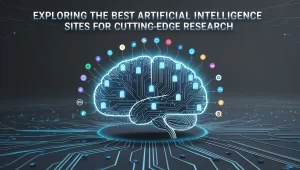Digital Transformation in Automotive Retail: Accelerating Online Sales and Virtual Showrooms – The automotive industry is undergoing a profound transformation, and nowhere is this more evident than in the realm of retail. Digital transformation has reshaped how consumers interact with automotive brands, shifting the focus towards online sales and virtual showrooms. In this article, we explore the key elements of this transformation and its impact on the automotive retail landscape.

1. The Digital Shift in Automotive Retail
Digital transformation in automotive retail represents a paradigm shift from traditional, brick-and-mortar dealership models to a more dynamic and online-centric approach. The integration of digital technologies is driven by changing consumer behaviors, preferences, and the desire for a seamless and convenient car-buying experience.
2. Online Sales Platforms: A Virtual Automotive Marketplace
Online sales platforms have emerged as virtual marketplaces where consumers can explore, compare, and purchase vehicles without the need for a physical visit to a dealership. These platforms provide comprehensive information about car models, specifications, pricing, and financing options, empowering consumers to make informed decisions from the comfort of their homes.
3. Enhanced Customer Experience: Personalization and Convenience
Digital transformation has elevated the customer experience, focusing on personalization and convenience. Virtual assistants, chatbots, and online customer service channels streamline the buying process, offering real-time assistance and addressing customer queries. The ability to customize and visualize vehicles online enhances the overall purchasing experience.
4. Virtual Showrooms and Augmented Reality (AR): Bringing the Dealership Home
Virtual showrooms and augmented reality technologies bridge the gap between online exploration and the traditional in-person dealership experience. Through AR applications, customers can virtually view and interact with vehicles, exploring features and configurations as if they were physically present. This immersive experience adds a new dimension to online car shopping.
5. Online Financing and Paperless Transactions: Streamlining Processes
Digital transformation extends to the financial aspect of car buying. Online financing tools and platforms allow customers to explore financing options, receive instant approvals, and complete paperwork digitally. This not only accelerates the purchasing process but also minimizes the need for extensive paperwork and in-person visits.
6. E-Commerce Integration: From Browsing to Buying in One Seamless Journey
E-commerce integration within automotive retail enables customers to seamlessly transition from browsing to buying within the same digital environment. The ability to configure, finance, and purchase a vehicle online creates a frictionless journey for consumers, fostering efficiency and reducing barriers to entry.
7. Data-Driven Insights: Tailoring Offerings to Consumer Preferences
Data analytics and artificial intelligence (AI) play a crucial role in digital automotive retail. Analyzing customer behavior and preferences provides valuable insights that dealerships can use to tailor their offerings, marketing strategies, and inventory to better align with consumer demands.
8. Online Test Drives and Home Deliveries: Redefining Convenience

Innovations in digital automotive retail extend to the physical experience of test drives and vehicle deliveries. Some brands offer online test drive scheduling, allowing customers to experience a vehicle at their convenience. Home deliveries, facilitated by digital transactions, further enhance the convenience factor for buyers.
9. Building Trust Through Transparency: Online Reviews and Ratings
Transparency is a cornerstone of successful digital transformation in automotive retail. Online reviews, ratings, and customer testimonials provide transparency and build trust. Consumers rely on the experiences of their peers when making purchasing decisions, making reputation management a critical aspect of the digital retail landscape.
10. Challenges and Opportunities: Navigating the Digital Terrain
While digital transformation presents numerous opportunities, it also comes with challenges. Automotive retailers need to navigate cybersecurity concerns, ensure a seamless online-to-offline transition, and continuously adapt to evolving technologies. Embracing these challenges as opportunities for growth is essential for long-term success.
Conclusion: The Future of Automotive Retail is Digital
In conclusion, digital transformation is revolutionizing the automotive retail landscape,* ushering in an era where online sales, virtual showrooms, and digital customer experiences take center stage. The ability to seamlessly integrate online and offline elements, coupled with a focus on personalization and convenience, defines the modern car-buying journey. As technology continues to advance, automotive retailers that embrace and lead the digital transformation will not only meet evolving consumer expectations but also shape the future of how cars are bought and sold. The future of automotive retail is undoubtedly digital, and those who adapt to this new paradigm are poised for success in the evolving marketplace.
Read More : Autonomous Driving Technology: Navigating the Road to Self-Driving Cars









1 thought on “Digital Transformation in Automotive Retail: Accelerating Online Sales and Virtual Showrooms”
Comments are closed.